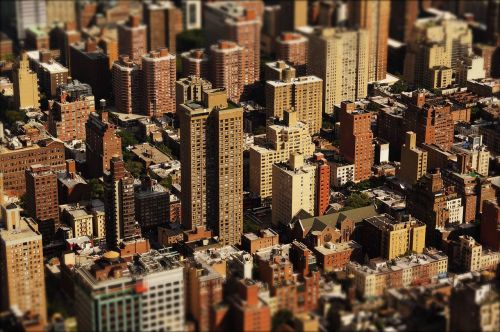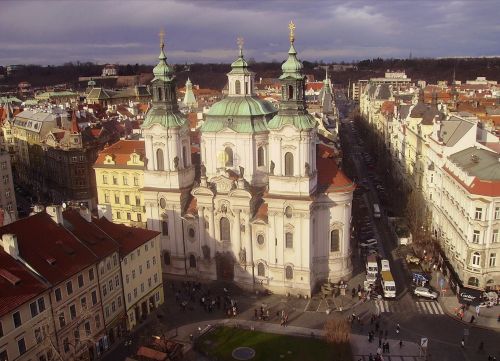Party like it’s 2008
Residential
During the first three quarters of 2019, most analysts were predicting a continuation of the previous year’s trend of slowing sales with a possible increase in profitability. However, the closer it came to the end of the year, the quieter the gloom-mongers became. As it turned out, most developers sold more apartments than in 2018, and the handful that did not could mostly be interpreted as isolated blips that said nothing about the general health of the market. Together, the eighteen listed residential developers registered a total of 26,264 apartments sold – almost 1,000 more than a year earlier.
The news keeps getting better
Let’s start with the sales figures, which give us a few reasons to be cheerful. Dom Development, which sold 3,661 apartments last year (1.6 pct more y-o-y), was able to hold on to first place among the stock exchange listed residential developers. According to the company, despite the fact that a large number of clients made cash transactions, purchases through mortgages as they become more easily available made up a significant proportion of sales. The low unemployment rate, the significant increase in salaries and the continuing low interest rates all contributed to a further improvement in the financial situation of buyers, pushing up the demand. The profitability of residential developers was largely due to land prices and the construction costs for residential projects. “With the stabilisation of material prices and the continued wide availability of subcontractors as well as the significant development of our own general contracting through Dom Construction, we were able to keep construction costs at a minimum,” explains Jarosław Szanajca, the CEO of Dom Development. However, the Warsaw-based developer did lose some of its home market – its sales in the capital came to 2,347 units, whereas 2018 closed with 2,580 units sold. The second biggest seller nationwide was Atal, which saw record sales of 3,196 units, improving on its 2018 result by 32 pct. “Last year we started sales for 20 projects with 2,794 apartments in total. In our opinion, the sales should continue over the next few quarters as the demand for apartments remains stable but consistently high,” predicts Zbigniew Juroszek, the CEO of Atal. The ambitions of the developer, however, extend beyond the domestic market: Atal Development GmbH has signed a EUR 44.25 mln conditional land purchase agreement for a multi-stage residential project in Dresden. Murapol, meanwhile, slipped back one place into third position in the national ranking. Despite this, the company improved its sales figures by more than 3 pct y-o-y, ending 2019 with 2,868 preliminary and development contracts signed (3,674 contracts including paid reservations). “Last year was another successful period for the residential sector. The market grew steadily and, despite rising apartment prices, the demand remained high and stable. For us it was also a very good time, in which we had very good results across all our operations,” claims Nikodem Iskra, the CEO of Murapol. Last year, the company launched a spectacular marketing campaign, involving the sale of two pools of 2,000 apartments in January and September. The units are under construction in 18 development projects in 13 cities – on the major domestic residential markets (Warsaw, Kraków, Poznań, Wrocław, Łódź and the TriCity) as well as in smaller locations (Katowice, Toruń, Gliwice, Tychy and Mikołów). The greatest progress last year was recorded by Victoria Dom in Warsaw, where it saw its sales figures improve by almost 49 pct y-o-y (from 1,055 to 1,570 apartments sold), while Echo Investment (37.6 pct up, from 986 to 1,357 units sold) and Budimex Nieruchomości (37 pct up, from 1,208 to 1,655) also recorded spectacular increases. In total, 11 out of the 18 listed companies improved their annual results.
Not everyone grows
It is also worth taking a look at those who have seen their sales shrink back. Three developers saw sales slip by a few percent, but two companies: – J.W. Construction and Develia – saw much larger declines and two others saw their sales collapse. Wrocław-based developer Lokum sold just 268 apartments in 2019, which was a 73 pct drop (it also handed over 19 pct fewer apartments). Its Q4 figure was even worse – 33 units sold (227 a year earlier, down by over 85 pct). The developer blames significant delays over building permits, which prevented it from launching sales for new projects. “2019 was an extremely difficult year for us to launch projects. In Q4 we were able to replenish our product range with 450 units in three projects in Kraków, but the remaining time was too short for us to be able to hit our sales targets for the year,” explains Bartosz Kuźniar, the CEO of Lokum Deweloper. Polnord only sold 323 units in 2019 – more than 61 pct less than in the previous year when it sold 836 apartments. However, the company did see an improvement in the final quarter, when it secured 116 contracts – almost 40 pct more than in the previous year.
A bubble set to burst?
Those who were expecting another correction across the board in sales have certainly been surprised – and so there was no cooling of the development market in 2019, not even by half a degree. Along with prevailing sales increases, we also have a situation in which all three of the main indicators for the residential market are on the rise. These figures are the number of units building permits have been issued for, the number under construction and the number handed over. These are all signalling further market growth. On the other hand, it’s impossible not to notice that the economy has been slowing down, while rising prices and the prospect of inflation also have to be factored in. How long can the party last and how will it finally fizzle out? The safest, but hardly the most original thing, to say seems to be: the curtain still has to rise on the final scene of the next act.
Bartosz Turek
chief analyst, HRE Investments
A boom, not a bubble
In 2019, construction work got underway on more than 237,000 residential units in Poland – a record since the country’s transformation to democracy. The difficulties involved in obtaining plots for building apartment blocks have been increasingly encouraging developers to go off the beaten track, such as by taking on the conversion of former industrial premises or developing on railway sites. But despite all these obvious difficulties, it was still possible for the residential sector to reach heights unseen for many years. This is, nevertheless, not a false boom. Developers are building new apartments because there are still plenty of people willing to buy their own flats. This high demand for real estate is a direct result of the improving financial situation of many Poles and the fact that there are simply too few apartments available to buy in the country – there is at least a shortfall of 2.1 mln units and the figure could well go up to 2.9 mln as the number of households increases over the next few years. Added to this, these numbers do not take into account the fact that at least a million economic migrants have come into the country, some of whom have now settled here. According to data published by GUS [the Polish Central Statistical Office], the construction of 237,300 housing units was started in 2019 – 7 pct more than in 2018 and almost 22 pct more than at the peak of the last construction boom in 2008. In terms of completed apartments, there was also an improvement on the previous year’s figure – 207,200 units were completed last year, almost 12 pct more than in 2018. The number of building permits awarded to investors continues to look rosy, which in turn will mean more projects started and, as a result, the number of apartments completed over the next 2–5 years should be considerably boosted. Here too records have been broken: in 2019 building permits for 268,500 apartments were issued – up by more than 4 pct on the previous year but also almost 6 pct more than in the peak year of 2008.





















































